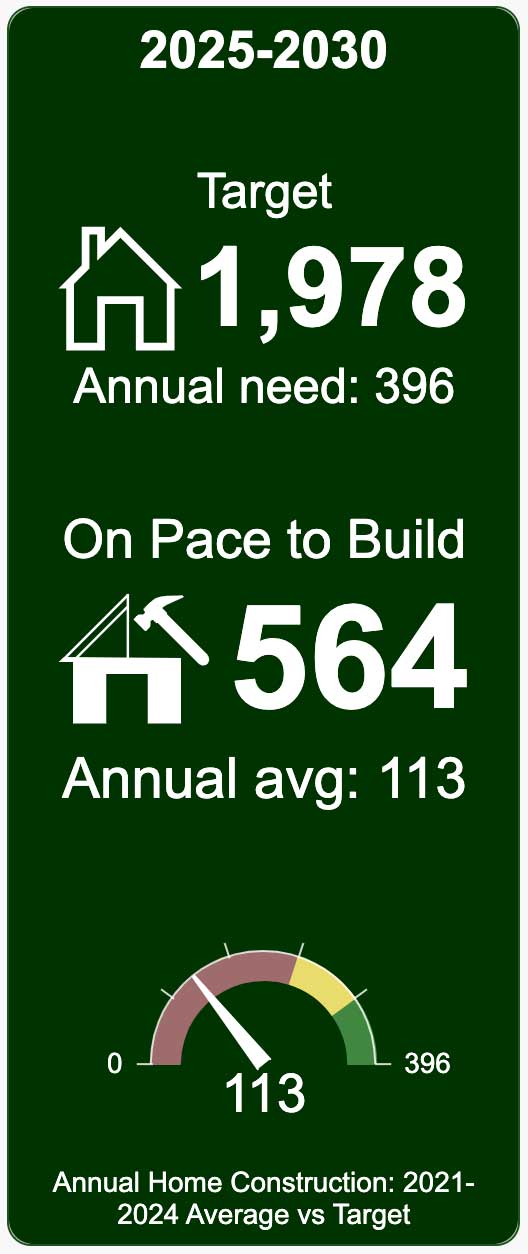State Issues Housing Need Report and Published Housing Development Dashboard
Vermont's housing market has been struggling to meet demand due largely to pandemic population growth combined with increased construction costs. This has resulted in unhealthy vacancy rates, increased cost of living, and a per capita unhoused rate ranking the second highest in the country. To take stock of the issue, as required by the HOME Act of 2023 and ACT 181 of 2024, The Vermont Department of Housing and Community Development (DHCD), with support from the Vermont Association of Planning and Development Agencies (VAPDA), created the Statewide and Regional Housing Targets report. The findings show that Vermont needs 41,000 new rental and owner-occupied residences in the next 5 years "to stabilize housing prices, normalize vacancy rates, help grow its current workforce, and attract new residents."
To track the progress of this lofty goal, the DHCD created the Housing Development Dashboard representing the target, current pace, and past numbers, as well as providing a map of previous and current builds. The dashboard indicates that the annual state need for housing is 8,237 new homes, adding up to 41,184 by 2030. Currently, Vermont is on track to build 11,059 with an annual average of 2,212. That means we are about 73% short.
Addison County is no exception. With a five-year target of 1,978 and annual need of 396 homes, the county is only on track to build a total of 564 and an annual average of 113. Challenges here are similar across Vermont, but a few factors are heightened. Increased flooding and unpredictable weather conditions have threatened existing housing throughout the state, especially manufactured homes which make up 8% of the county's housing stock, 3% higher than the state average. Addison County houses are slightly older, leading to higher maintenance and energy costs. The average home is priced $25,000 more than the state average, at $350,000, and sells slightly quicker at an average of 57 days on the market. Addison County has its own struggles, but shares Vermont's need to address the complicated issue of housing.

